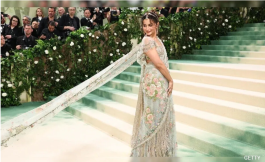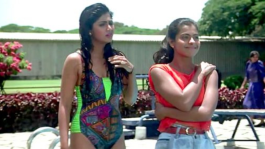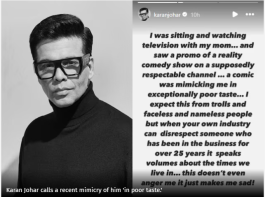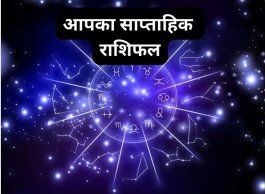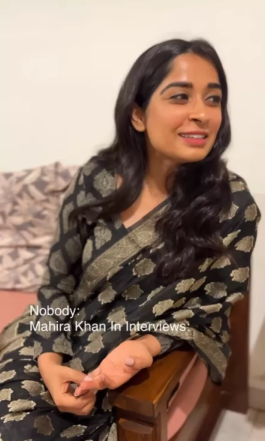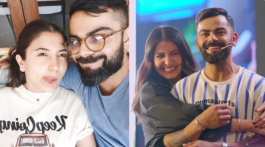The Pepsi slogans through the years
---------------------------------------------------
- 1909-1939: Delicious and Healthful
- 1939-1950: Twice As Much For A Nickel Too
- 1950-1963: The Light Refreshment
- 1953-1961: Be Sociable
- 1961-1963: Now It's Pepsi For Those Who Think Young
- 1963-1967: Come Alive! You're In The Pepsi Generation
- 1967-1969: Taste That Beats The Others Cold
- 1969-1973: You've Got A Lot To Live, Pepsi's Got A Lot To Give
- 1973-1975: Join The Pepsi People Feelin' Free
- 1975-1978: Have A Pepsi Day
- 1978-1981: Catch That Pepsi Spirit
- 1981-1982: Pepsi's Got Your Taste For Life!
- 1983-1983: Pepsi Now!
- 1984-now: Pepsi, The Choice Of A New Generation
----------------------------------------
Pepsi Logo Evolution!!!!!!!!!!
----------------------------------------
----------------------------------------------
Evolution through can
---------------------------------------------
-----------------------------------------------------
Pepsi evolution logo (Video)
-----------------------------------------------------
____________________________________
Pepsi Historical Event:
---------------------------------------------------
1898
Caleb Bradham, a New Bern, North Carolina pharmacist, renames "Brad's Drink," a carbonated soft drink he's created to serve his drugstore's fountain customers. The new name, Pepsi-Cola, is first used on August 28.
1902
Bradham applies to the U.S. Patent Office for a trademark for the Pepsi-Cola name.
1903
In keeping with its origin as a pharmacist's concoction, Bradham's advertising praises his drink as "Exhilarating, invigorating, aids digestion."
1905
A new logo appears, the first change from the original in 1898.
Pepsi-Cola's first bottling franchises are established in Charlotte and Durham, North Carolina.
1906
Pepsi gets another logo change, the third in eight years. The modified script logo is created along with the slogan, "The Original Pure Food Drink." There are 15 U.S. Pepsi bottling plants. The Pepsi trademark is registered in Canada. Syrup sales rise to 38,605 gallons.
1907
The Pepsi trademark is registered in Mexico.
1909
Automobile racing pioneer Barney Oldfield becomes Pepsi's first celebrity endorser when he appears in newspaper ads describing Pepsi-Cola as "A bully drink - refreshing, invigorating, a fine bracer for a race." The theme "Delicious and healthful" appears, and will be used intermittently over the next two decades.
1920
Pepsi appeals to consumers with "Drink Pepsi Cola. It will satisfy you."
The price of sugar on the New York Stock Exchange reaches 26 cents per pound. Bradham gambles on the price going higher and buys large stocks of sugar. By the end of the year, sugar demand slows on the open market and the price drops to a catastrophic low of two cents per pound.
1923
Pepsi-Cola Company is declared bankrupt and its assets are sold to a North Carolina concern, Craven Holding Corporation, for $30,000.
Roy C. Megargel, a Wall Street broker, buys the Pepsi trademark, business and goodwill from Craven Holding Corporation for $35,000, forming the Pepsi-Cola Corporation.
1934
Pepsi begins selling a 12-ounce bottle for five cents, the same price charged by its competitors for six ounces.
1939
A newspaper cartoon strip, "Pepsi & Pete," introduces the theme "Twice as much for a nickel" to increase consumer awareness of Pepsi's value advantage.
1940
Pepsi makes advertising history with the first advertising jingle ever broadcast nationwide. "Pepsi-Cola hits the spot/Twelve full ounces that's a lot/Twice as much for a nickel, too/Pepsi-Cola is the drink for you." "Nickel, Nickel" will eventually become a hit record and will be translated into 55 languages.
CEO Walter Mack adopts the standardized, embossed twelve-ounce bottle, which debuts with the "Pepsi-Cola" label blown and baked into the glass. A new logo, with more rounded script letters, is adopted.
Mack sponsors a nationwide essay contest which ultimately leads to the hiring of Allen McKellar and Jeannette Maund, among the first African Americans hired in a professional capacity by a major U.S. corporation.
1941
In support of America's war effort, Pepsi changes the color of its bottle crowns to red, white and blue. A Pepsi canteen in Times Square, New York, operates throughout the war, enabling more than a million families to record messages for armed services personnel overseas.
1943
The "Twice as much" advertising strategy expands to include the theme "Bigger drink, better taste."
1946
World War II demands that sugar be rationed again. To counter the effects of rationing, Mack purchases a sugar plantation in Cuba, which proves to be a highly profitable venture.
Pepsi's theme line becomes "Bigger Drink, Better Taste."
Pepsi-Cola moves into Latin America.
1947
International profits reach $6,769,000. Pepsi moves into the Philippines and Middle East.
1948
Corporate headquarters moves from Long Island City, New York, to midtown Manhattan.
1949
"Why take less when Pepsi's best?" is added to "Twice as much" advertising. Pepsi's theme line appeals to Pepsi lovers during hard times with "Why take less when Pepsi's best?"
Former U.S. Secretary of Commerce, the late Ron Brown, becomes the first African American to appear in a national consumer campaign when Pepsi initiates a campaign targeting the African-American market.
1950
Alfred N. Steele becomes President and Chief Executive Officer of Pepsi-Cola. Mr. Steele's wife, Hollywood movie star Joan Crawford, is instrumental in promoting the company's product line.
Pepsi-Cola's advertising keeps pace with consumer tastes as Steele pioneers the promotion of Pepsi-Cola as an experience rather than a bargain. The "Twice as much for a nickel" slogan gives way as "More Bounce to the Ounce" takes Pepsi into the energetic decade.
1953
Americans become more weight-conscious, and a new strategy based on Pepsi's lower caloric content is implemented with "The Light Refreshment" campaign.
1954
"The Light Refreshment" evolves to incorporate "Refreshing Without Filling."
1956
A total of 149 Pepsi-Cola bottling plants operate in 61 countries outside the U.S.
1958
Sometimes referred to as "the kitchen cola," as a consequence of its longtime positioning as a bargain brand, Pepsi now identifies itself with young, fashionable consumers with the "Be sociable, have a Pepsi" theme. A distinctive "swirl" bottle replaces Pepsi's earlier straight-sided bottle.
1959
Soviet Premier Nikita Khrushchev and U.S. Vice President Richard Nixon meet in the soon-to-be-famous "kitchen debate" at an international trade fair. The meeting, over Pepsi, is photo-captioned in the U.S. as "Khrushchev Gets Sociable."
1961
Pepsi further refines its target audience, recognizing the increasing importance of the younger, post-war generation. "Now it's Pepsi, for those who think young" defines youth as a state of mind as much as a chronological age, maintaining the brand's appeal to all market segments.
Harvey C. Russell joins Pepsi-Cola, becoming the first African American named a Vice President in a major U.S. corporation.
1962
Pepsi receives its new logo, the sixth in Pepsi history. The "serrated" bottle cap logo debuts, accompanying the brand's groundbreaking "Pepsi Generation" ad campaign.
1963
In one of the most significant demographic events in commercial history, the post-war baby boom emerges as a social and marketplace phenomenon. Pepsi recognizes the change, and positions Pepsi as the brand belonging to the new generation - The Pepsi Generation. "Come alive! You're in the Pepsi Generation" makes advertising history. It is the first time a product is identified, not so much by its attributes, as by its consumers' lifestyles.
1964
A new product, Diet Pepsi, is introduced into Pepsi-Cola advertising.
1965
Expansion outside the soft drink industry begins. Frito-Lay of Dallas, Texas, and Pepsi-Cola merge, forming PepsiCo, Inc.
Military 12-ounce cans are such a success that full-scale commercial distribution begins.
Mountain Dew launches its first campaign, "Ya-Hoo Mountain Dew. It'll tickle your innards."
1966
Diet Pepsi's first independent campaign, "Girlwatchers," focuses on the cosmetic benefits of the low-calorie cola. The "Girlwatchers" musical theme becomes a Top 40 hit. Advertising for another new product, Mountain Dew, a regional brand acquired in 1964, airs for the first time, built around the instantly recognizable tag line, "Ya-Hoo, Mountain Dew!"
1967
When research indicates that consumers place a premium on Pepsi's superior taste when chilled, "Taste that beats the others cold. Pepsi pours it on" emphasizes Pepsi's product superiority. The campaign, while product-oriented, adheres closely to the energetic, youthful lifestyle imagery established in the initial Pepsi Generation campaign.
1969
"You've got a lot to live. Pepsi's got a lot to give" marks a shift in Pepsi Generation advertising strategy. Youth and lifestyle are still the campaign's driving forces, but with "Live/Give," a new awareness and a reflection of contemporary events and mood become integral parts of the advertising's texture.
1972
Preliminary trade agreement is signed between the U.S.S.R. and PepsiCo, Inc.
1973
"Join the Pepsi people, feelin' free" captures the mood of a nation involved in massive social and political change. It pictures us the way we are - one people, but many personalities.
Pepsi receives its new logo, the seventh in Pepsi history. The logo evolves into a boxed look with minor typeface changes occurring throughout the next decade.
The third Mountain Dew slogan, "Put A Little Ya-Hoo in Your Life," debuts.
1974
First Pepsi plant opens in the U.S.S.R.
Television ads introduce the new theme line, "Hello, Sunshine, Hello, Mountain Dew."
1975
The Pepsi Challenge, a landmark marketing strategy, convinces millions of consumers that Pepsi's taste is superior.
Pepsi Light, with a distinctive lemon taste, introduces an alternative to traditional diet colas.
The two-liter Plastishield bottle is introduced.
1976
"Have a Pepsi day" is the Pepsi Generation's upbeat reflection of an improving national mood. "Puppies," a 30-second snapshot of an encounter between a very small boy and some even smaller puppies, becomes an instant commercial classic.
1979
With the end of the '70s comes the end of a national malaise. Patriotism has been restored by an exuberant celebration of the U.S. bicentennial, and Americans are looking to the future with renewed optimism. "Catch that Pepsi spirit!" catches the mood and the Pepsi Generation carries it forward into the '80s.
1982
With all the evidence showing that Pepsi's taste is superior, the only question remaining is how to add that message to Pepsi Generation advertising. The answer? "Pepsi's got your taste for life!" a triumphant celebration of great times and great taste.
1983
The soft drink market grows more competitive, but for Pepsi drinkers, the battle is won. The time is right and so is their soft drink. It's got to be "Pepsi Now!"
1984
A new generation has emerged - in the United States, around the world and in Pepsi advertising, too. "Pepsi. The Choice of a New Generation" announces the change, and the most popular entertainer of the time, Michael Jackson, stars in the first two commercials of the new campaign. The two spots quickly become "the most eagerly awaited advertising of all time."
Lemon Lime Slice, the first major soft drink with real fruit juice, is introduced, creating a new soft drink category, "juice added." In a subsequent line of extensions, Mandarin Orange Slice goes on to become the number-one orange soft drink in the U.S. Diet Pepsi is reformulated with NutraSweet (aspartame) brand sweetener.
1985
Lionel Ritchie leads a star-studded parade into "New Generation" advertising followed by pop music icons Tina Turner and Gloria Estefan. Sports heroes Joe Montana and Dan Marino are part of it, as are film and television stars Teri Garr and Billy Crystal.
Geraldine Ferraro, the first woman nominated to be vice president of the U.S., stars in a Diet Pepsi spot. And the irrepressible Michael J. Fox brings a special talent, style and spirit to a series of Pepsi and Diet Pepsi commercials, including a classic, "Apartment 10G."
By the end of the year, the New Generation campaign earns more than 58 major advertising and film-related awards. Pepsi's campaign featuring Ritchie is the most remembered in the country, according to consumer preference polls.
1986
7-Up International is acquired in Canada.
"Dew It Country Cool" becomes the new slogan for Mountain Dew. Pepsi broadens Mountain Dew popularity with the introduction of Diet Mountain Dew. Mountain Dew is the sixth-largest brand in the industry, supporting double-digit growth annually for the past eight years.
1987
After an absence of 27 years, Pepsi returns to Times Square, New York, with a spectacular 850-square-foot electronic display billboard declaring Pepsi to be "America's Choice."
1988
Michael Jackson returns to "New Generation" advertising to star in a four-part "episodic" commercial named "Chase." "Chase" airs during the Grammy Awards program and is immediately hailed by the media as "the most-watched commercial in advertising history."
1989
"The Choice of a New Generation" theme expands to categorize Pepsi users as "A Generation Ahead!"
In a widely praised initiative designed to help stem the severe dropout problem in U.S. high schools, Pepsi-Cola launches the pilot phase of a multi-million-dollar program, the Pepsi School Challenge, in inner-city schools in Dallas and Detroit.
Pepsi-Cola introduces an exciting new flavor, Wild Cherry Pepsi.
1990
Teen stars Fred Savage and Kirk Cameron join the "New Generation" campaign, and football legend Joe Montana returns in a spot challenging other celebrities to taste-test their colas against Pepsi. Music legend Ray Charles teams up with Uh-Huh Girls. The slogan for Diet Pepsi is modified to "You Got The Right One Baby, Uh-Huh."
Craig E. Weatherup is named CEO of Pepsi-Cola North America, as Canada becomes part of the company's North American operations.
Pepsi-Cola unveils its new logo, the eighth in 93 years. To foster the earlier scripted logo's sense of movement, "Pepsi," now in italic capital typeface, is removed from a smaller blue and red Pepsi swirl and runs vertically up the package.
The Pepsi School Challenge wins the U.S. Department of Labor "LIFT" Award for its efforts to improve education and academic achievement of students preparing for the workforce of tomorrow.
1991
"You got the right one baby" is modified to "You got the right one baby, uh-huh!" The "Uh-Huh Girls" join Ray Charles as backup singers and a campaign soon to become the most popular advertising in America is on its way. Supermodel Cindy Crawford stars in an award-winning commercial made to introduce Pepsi's updated logo and package graphics.
1992
Celebrities join consumers, declaring that they "Gotta have it." The interim campaign supplants "Choice of a New Generation" as work proceeds on new Pepsi advertising for the '90s. Mountain Dew growth continues, supported by the antics of an outrageous new Dew Crew whose claim to fame is that, except for the unique great taste of Dew, they've "Been there, done that, tried that."
Pepsi-Cola Company implements the "Right Side Up" philosophy, where the customer and frontline employees are at the top of the organization.
Publisher Earl Graves and basketball superstar Earvin "Magic" Johnson are appointed Pepsi-Cola franchisees for the Washington, D.C. market. Their new company quickly becomes one of the largest African American-run companies in the U.S.
1993
"Be young, have fun, drink Pepsi" advertising starring basketball superstar Shaquille O'Neal is rated as best in U.S.
1994
New advertising introducing Diet Pepsi's freshness dating initiative features Pepsi CEO Craig Weatherup explaining the relationship between freshness and superior taste to consumers.
1995
In a new campaign, the company declares "Nothing else is a Pepsi" and takes top honors in the year's national advertising championship.
Starbucks and Pepsi team up with the North American Coffee Partnership and launch Mazagran, a carbonated coffee drink.
Pepsi enters the dairy beverage category with Smooth Moos smoothies.
1996
In February of this year, Pepsi makes history once again by launching one of the most ambitious entertainment sites on the World Wide Web. Pepsiworld eventually surpasses all expectations, and becomes one of the most launched and copied sites in this new medium, firmly establishing Pepsi's presence on the Internet.
1997
In the early part of the year, Pepsi pushes into a new era with the unveiling of the GeneratioNext campaign. GeneratioNext is about everything that is young and fresh, a celebration of the creative spirit. It is about the kind of attitude that challenges the norm with new ideas, at every step of the way.
1998
Pepsi continues its popular "GeneratioNext" campaign with spots that include: Goose, Gnat and Stunt Driver (featuring racing superstar Jeff Gordon).
In 1998 Pepsi launches its new look, called "Globe," which prominently features a stylized, three-dimensional Pepsi Globe set against a blue ice backdrop. It affects all can, bottle, and multican packaging for Pepsi, Diet Pepsi, Caffeine Free Pepsi and Caffeine Free Diet Pepsi.
1999
"The Joy of Cola" new advertising campaign for Brand Pepsi features the voices of actors Marlon Brando, Isaac Hayes and "Queen of Soul" Aretha Franklin. The spots also feature child actress Hallie Eisenberg as the "Little Girl."
Pepsi and Lucasfilm team up again as "Star Wars: Episode I - The Phantom Menace" hits movie theaters. Consumer excitement surrounding the long-awaited return of the Star Wars series is heightened as special Pepsi bottles and cans offer 24 different Star Wars characters. The collection series includes a gold Yoda can.
Pepsi recruits its first "spokesalien" Marfalump to star in its commercials supporting the campaign. Marfalump, who was created by BBDO and George Lucas' Industrial Light and Magic company, has two great passions: Pepsi and Star Wars. The spots, titled "Landing" and "Play Acting," illustrate the great lengths the young alien will go to enjoy both of his passions.
Pepsi-Cola North America welcomes Gary Rodkin as President and CEO.
In a dramatic restructuring of the business, Pepsi announces one of the largest IPOs in history. On March 31, 1999, The Pepsi Bottling Group, Inc. (PBG) becomes a publicly traded company and Pepsi's largest bottler. PBG is headed by President and CEO Craig Weatherup.
The new look replaces Pepsi's current pedestal logo with a new brand identity that also more prominently features the Pepsi Globe against a blue background.
Pepsi celebrates its centennial year with a birthday party that is attended by Pepsi-Cola bottlers from all over the world. Joining the festivities are Pepsi stars and friends including Ray Charles, Kool and the Gang and the Rolling Stones.
President and Mrs. George Bush, Lady Thatcher and Walter Cronkite also help to commemorate the occasion where Pepsi's legacy is honored and a new look for the millennium is unveiled. The three-dimensional globe against an ice blue background becomes the universal symbol for one Pepsi family - poised for innovation and world leadership as it enters the new century.
2000
Faith Hill, Sammy Sosa and Ken Griffey Jr. - three of the hottest names in entertainment - signed new deals to endorse Pepsi-Cola products. Singing sensation Faith Hill, who has rocked the charts with her top 10 hits, stared in a new "Joy of Cola" ad with "Pepsi Girl" Hallie Eisenberg.
The ad debuted during the March 26 Academy Awards broadcast. Major League Baseball All-Stars Sammy Sosa and Ken Griffey Jr. also stepped up to bat in new Pepsi commercials. In addition to the ads, each slugger was be involved in Pepsi's "Takin' it to the Fields" youth baseball and softball programs, as well as appeared on in-store promotional materials for the brand.
From Boston to San Francisco and everywhere in between, consumers' cola choice is clear. In more than 30 markets currently conducting the Pepsi Challenge, the tastes of Pepsi and Pepsi ONE are preferred over Coke products in every market, especially in Philadelphia, Dayton, Tucson, San Antonio and Seattle. In a cross-promotion designed to further engage youth in our products, consumers who take the Pepsi Challenge receive "starter points" for this summer's "Choose Your Music" program. Participants can also have their photos taken and posted online at www.pepsi.com, driving traffic to and awareness of Pepsi's Internet site.
2001
Pop superstar Britney Spears appears in her first Pepsi commercial during the 2001 Academy Awards. The high-energy spot also runs online, where more than 2 million fans click their way to Britney's own version of "The Joy of Pepsi."
Pepsi Stuff.com lets consumers redeem points from specially marked packages of Pepsi products for more than a half-million cool prizes, and proves to be Pepsi's most popular online promotion ever.
Colombian singing sensation Shakira stars in a series of new commercials for Pepsi just as her debut English-language album hits stores in the U.S. At the same time, Pepsi agrees to sponsor the Latin pop star's worldwide concert tour.
Pepsi unveils its FunWraps Factory, letting consumers personalize Pepsi cans with fun designs and unique messages. With a wide variety of sports, entertainment and holiday images to choose from, Pepsi drinkers begin creating their own can labels for just about any occasion.
Pepsi puts "a little twist on a great thing", introducing lemon-flavored Pepsi Twist and Diet Pepsi Twist. The product launch marks the return to lemon-flavored colas for Pepsi, which distributed Pepsi Light until the mid-1980s.
______________________________
Contributed by Abhishek
_______________________________



